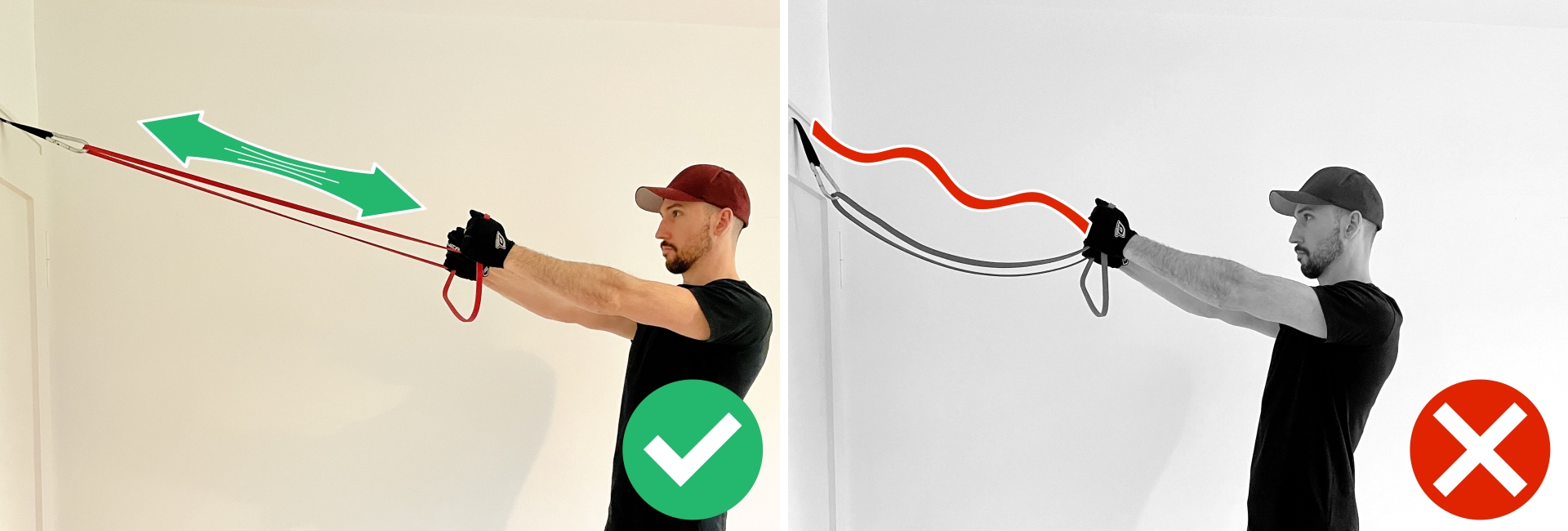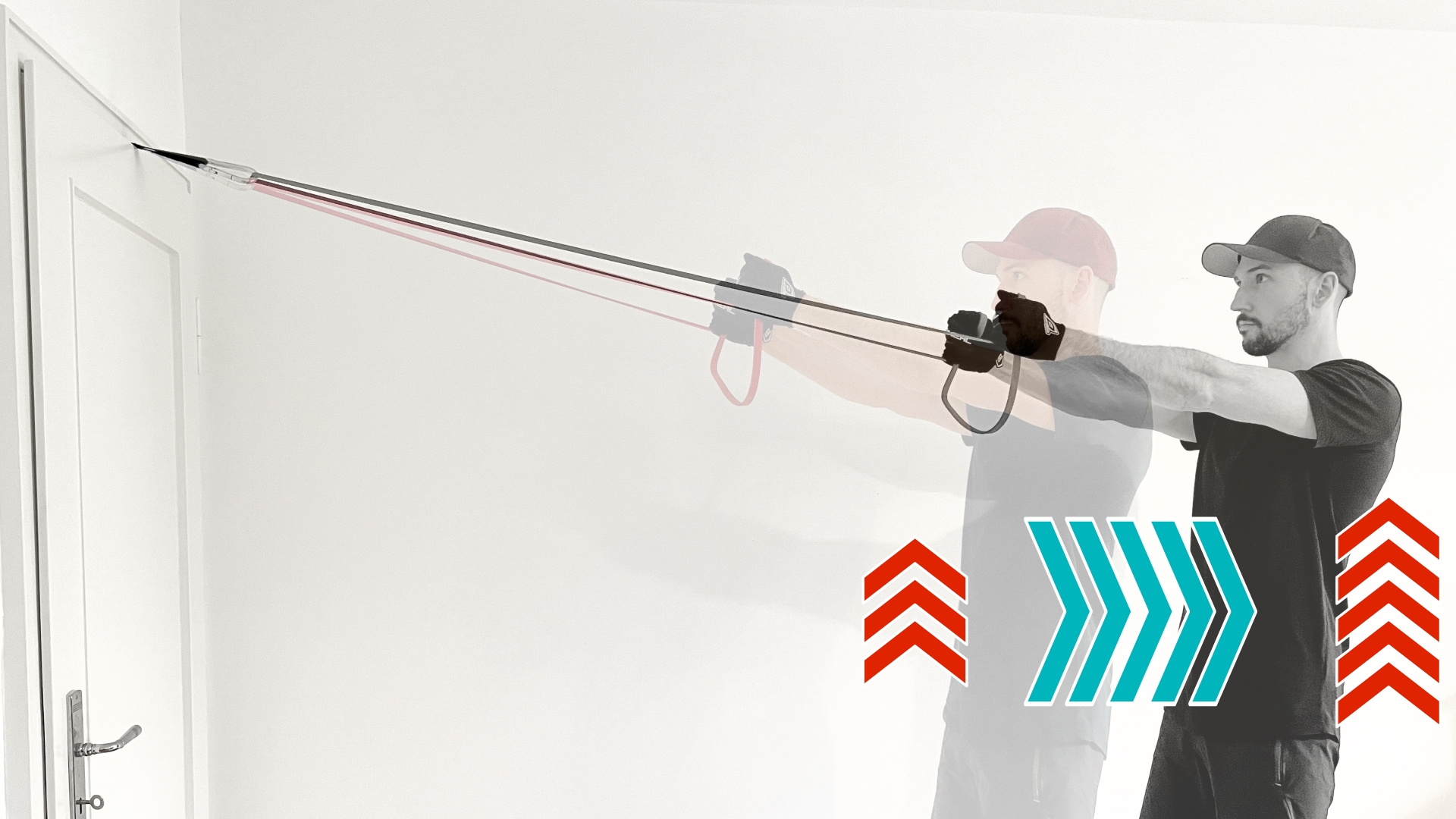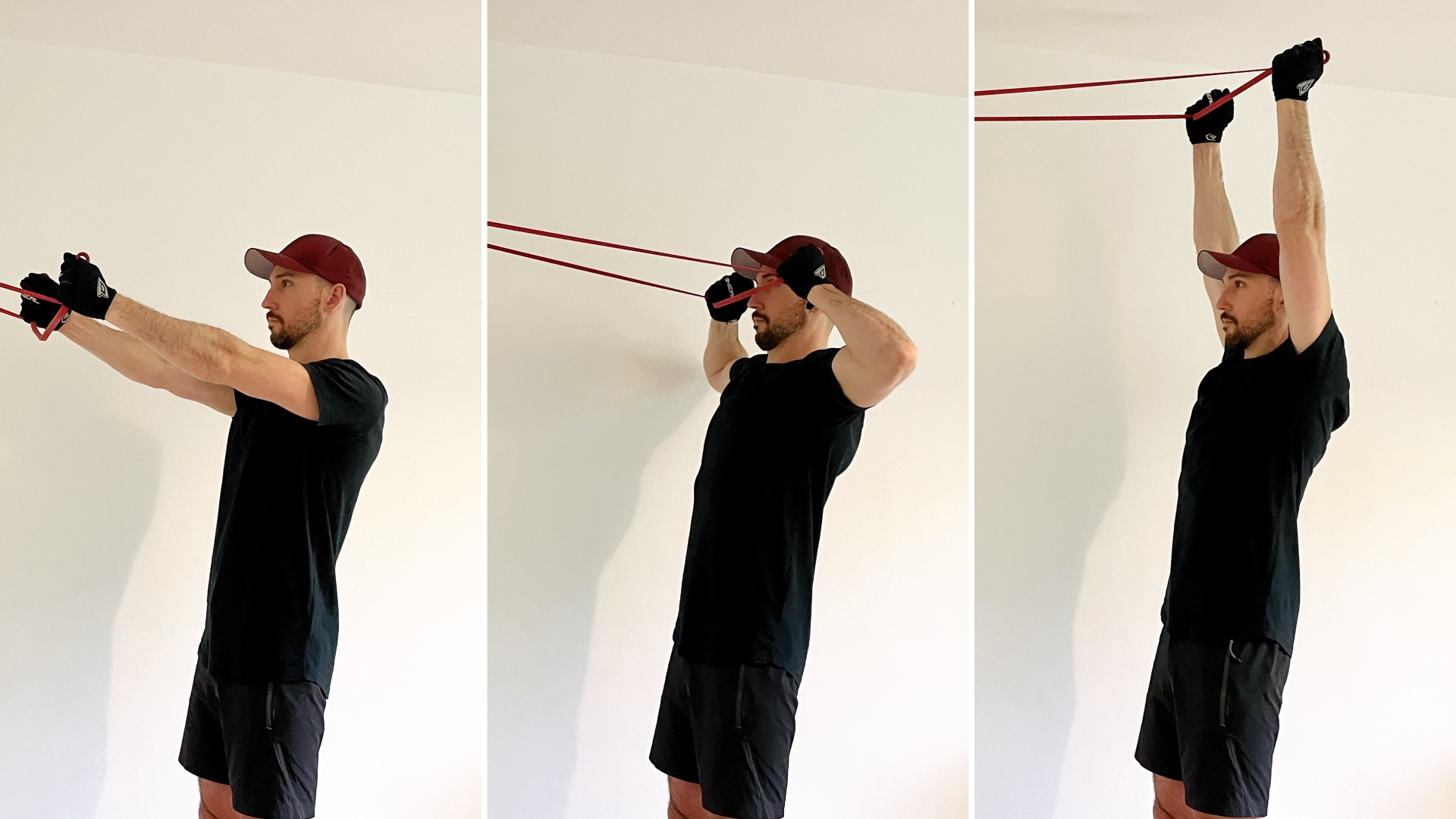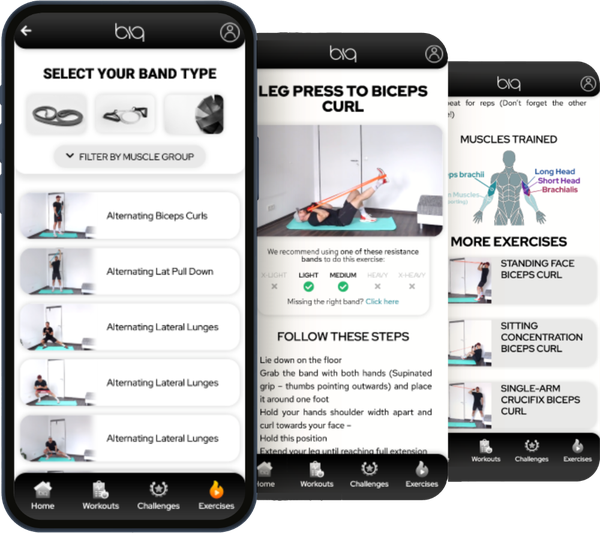Sitting is, for many, the position they spend the most time in throughout the day. Over time, this often results in a bad posture due to weak posterior deltoids and upper back muscles. This is where face pulls can help you to do a full turnaround, build up the lagging muscles and fix your posture. Usually you would need a cable machine to do this exercise. This means either going to a gym or investing quite some money into a home set up. Resistance bands are the other alternative. Much more affordable and even more effective.
In the following sections, we will show you how to perform your first 100% correct face pull. We will cover what common form mistakes to pay attention to and what equipment you will need. Next, we have a look at different methods of adjusting the intensity level and what variations exist. And finally, we discuss which muscles are involved in this exercise and how to actually incorporate face pulls into workouts.Let’s go!
How To Do Face Pulls The Right Way With Resistance Bands?
What is always the first step in any resistance training? That’s right… Warm-Up! This way, you will get your body prepared for working out and drastically minimize the chance of injury. For face pulls, you should really get one of the bands with a lighter resistance level. When the resistance is too high, the face pull turn rather into a row, and we don’t want that.
Warm-up and resistance level done. Next: equipment.
You will need:
- A resistance band (Rather get a Resistance Bands Set from the get go)
- A Door Anchor to anchor the band to a door
- Workout Gloves – This is optional, but highly recommended to protect your hands from the band friction
Alright now we get to the existing part. The answer to the question “What steps do I have to follow to get my first correct face pull?”
Easy – These 6 steps:
- Attach the band towards the top of a door with a door anchor
- Grab the band with both hands
- Step back until there is tension on the resistance band
- Pull towards your face until your hands are almost touching your face
- Return slowly to the starting position (resist against the pull of the band)
- Repeat for reps
Don’t skip the next section, where we cover the most common mistakes people do when performing this movement.
Nail The Exercise Form!
⓵ Slack = No Resistance – an unstretched band means that there is no resistance your muscles have to overcome. And this means that you are wasting time. The first and most important rule of resistance band training is to always have tension in the band. If you can’t do a full repetition without losing tension in the band, means that you have to use a band with a lighter resistance. This way, you will actually train the intended muscles and don’t risk an injury. So leave the ego out of training and use the band which enables you to do perfect face pulls.

⓶ The Right Grip – a lot of people choose an overhand grip for face pulls. However, this brings the wrist in an awkward position in the fully contracted position. Instead, we recommend using an underhand grip. This will result that your thumbs point back in the fully contracted position.

⓷ Controlled Reps and No Momentum – Usually people use momentum if the current resistance is simply too high. But it is much more beneficial to drop the load and use strict form. Therefore, focus on having your upper body stationary throughout the movement and don’t swing forth and back. In addition, really control the negative part of the motion – where your hands move forward towards the door anchor, again – If you simply let the band snap back and don’t actively resist the pull, you will make progress much, much slower.

Besides these specific mistakes, people do, and you should avoid for face pulls, there are various more general things to keep in mind when training with resistance bands. We collected The Worst Mistakes You Can Do When Training With Resistance Bands – Have a look to get our workouts to the next level.
How To Change The Intensity
After a while your body will adjust, and you will be needing to increase the intensity to keep making progress. The intuitive thing to do is by simply crank up the resistance, and we will have a look how to actually do it with resistance bans effectively. But there are other methods to keep in mind which don’t rely on increasing the load.
The best methods to adjust the resistance and intensity for face pulls are:
Changing the Distance to Anchor point – People often forget that a resistance band doesn’t have a fixed resistance and use a stronger band straightaway once a movement becomes easier. This jump in resistance is often too high. A better approach is using the full potential of each band. Since bands have a variable linear resistance, they become more and more challenging the more you stretch them. In the face pull exercise setup, you can increase the resistance by simply taking a step back. What I really love about this technique is that you can adjust the resistance in the middle of a set. I like to start with a higher resistance when my muscles are fresh, and take little steps forward once I feel that I can’t do another rep at the current distance.

Adding a second band – That is one of the benefits of having a set of bands with different resistance levels. You can use 2 or more bands to really get the right tension for a certain exercise and muscle group. Try adding the thinnest band to the one you currently use and see that it becomes more challenging but doesn’t take it overboard.
Slowing it down – another approach is increasing the time of each repetition to increase the intensity. By slowing down the reps, you will increase the total time under tension of your muscles quite much. Try it and see how humbling this is. Most of the time, you will be forced to lower the resistance drastically to still be able to perform your target repetition count.
Pausing – A variation of slower rep speed is adding a pause or an isometric hold at certain points in the exercise. For face pulls, this approach is really great to really feel your deltoids working. Add a pause in the fully contracted position (hands next to your head) and count to 2 (or higher) before bringing the hands forward again.
A great variation to implement a pause dynamically into the face pull is by pressing your hands over your head and bringing them back down each rep.

Lower Resistance and Higher Reps – The intensity of a set is a combination of the resistance or load and the amount of repetitions you perform. Usually you would choose a resistance which will make 10-12 reps challenging. Once in a while I change it up and grab a really light resistance bands. But instead of 10-12 reps, I aim for very high repetition numbers – like 25-45. Give it a try and let me know how you like it!
The BIQ App
Take training with resistance bands to the next level with our free app.
- 800+ Exercises
- all band types
- different training goals & workouts
- challenges
- much more
Alternative Ways To Do Face Pulls With Resistance Bands
A great way to stay motivated and keep your workouts interesting is to implement variations. Our favorites for the classical face pull are:
L-Sit Face Pull (no Door Anchor) – It is always good to have a variation in your back pocket which doesn’t rely on using a door anchor. To do face pulls without a door anchor, we will use our feet to lock one side of the band in place. Place the band around your feet (you can even wrap it around your feet to prevent it from any chance of slipping). Keep your legs straight and grab the band as described in the version in the previous sections and pull towards your face.
Reverse Fly – A great alternative exercise for face pulls is the reverse fly. This exercise also target the muscles in the upper back as well as the rear delts, but it will have less rotational load on the rotator cuff muscles of the shoulders.
How it’s done:
- Attach the band towards the top of a door with a door anchor (get inside the loop)
- Grab the band with both hands
- Step back until there is tension on the resistance band
- Keep your arms straight and bring your hand from in front of you outwards until they are pointing straight to the sides
- Return slowly to the starting position (resist against the pull of the band)
- Repeat for reps

Pull Apart – one of the most important exercises you should be doing for your posture. The pull apart is very similar to the reverse fly, however you won’t be needing a door anchor and the direction of the resistance will be slightly different, so the rear delt will be working harder.
How it’s done:
- Grab the band with both hands and get with your body inside the loop
- Keep your arms straight and your hands shoulder width apart in front of your chest
- Pull your hands apart until you point them straight to the sides
- Return slowly to the starting position (resist against the pull of the band)
- Repeat for reps

What Muscles Are Used In A Resistance Band Face Pull
The main goal of a face pull is to target the smaller upper back muscles and the posterior deltoid. Usually, these muscles are lagging in comparison to the bigger pulling muscles in the back and the pushing muscles on the front of your upper body. This can result in a suboptimal posture. Especially the rear delt is highly neglected most of the time. Implementing face pulls in your regular training will be a great first step to start eliminating any imbalances.
Main Working Muscles:
- Posterior Deltiod (Focus)
- Trapezius
- Teres Minor
Workout Routine
Simply by knowing how to do perfect face pulls and doing them on a regular basis, you’ve done yourself a huge favor. This way you will counter the effect of a lot of sitting, improve your posture and make the upper body much stronger and more stable. But you can do even better!
How? Simple. By having a workout routine and follow it. This way you will develop your whole body – make it stronger, more muscular, reduce body fat whatever your goals might be having a structured workout plan is the way to reach them. We believe that working out has to be low effort to stay consistent. That’s why we developed an app, which provides structured workout routines you can generate depending on your goals and available time. Additionally, we put a packed exercise library in there and added some challenges.
Sounds interesting? Find out more here: BIQ Training App



One Response
Face pulls seem really similar to pull aparts. Is there an advantage to doing both, or is it satisfactory to pick one instead of the other?